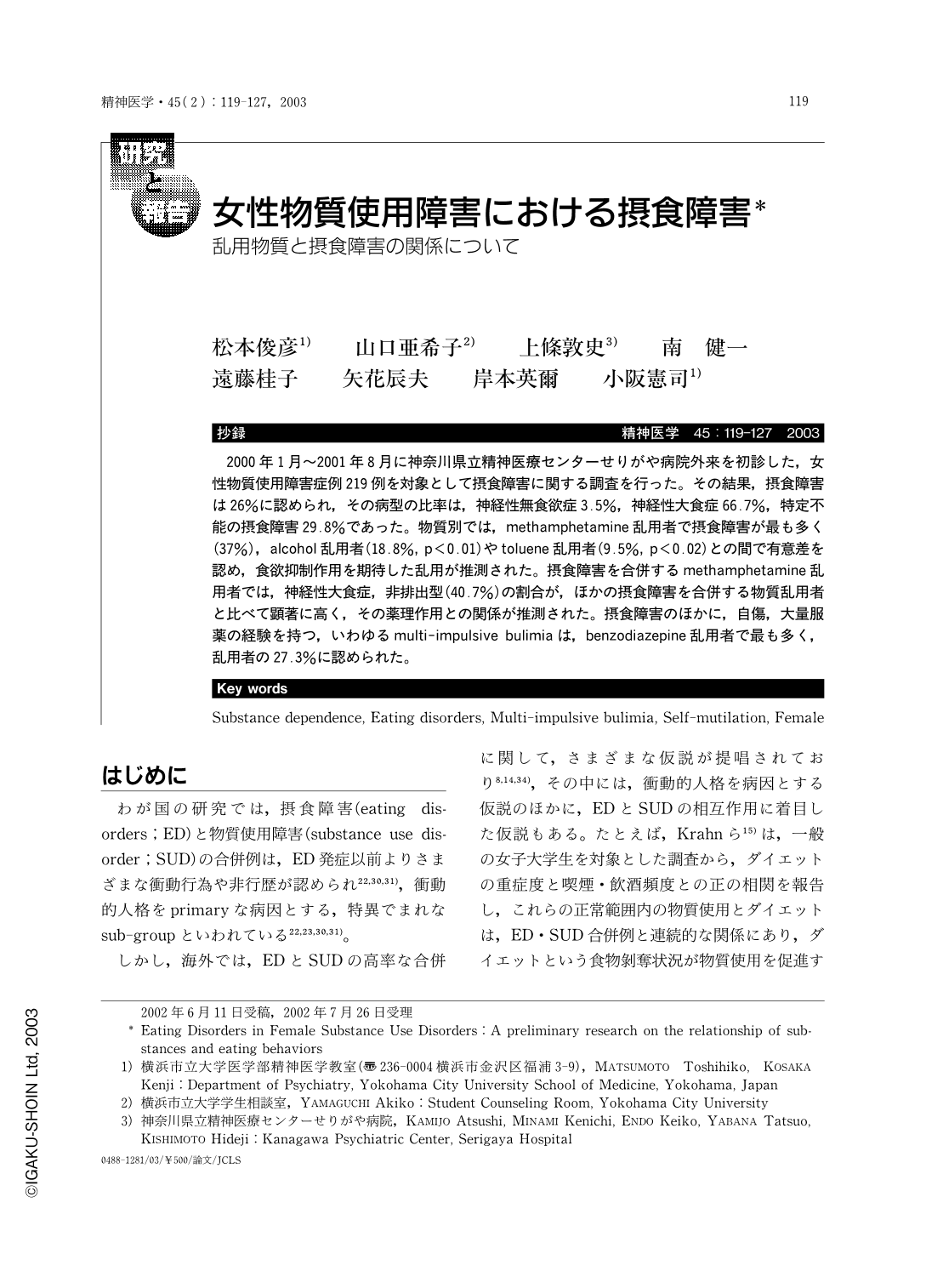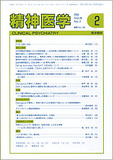Japanese
English
- 有料閲覧
- Abstract 文献概要
- 1ページ目 Look Inside
- サイト内被引用 Cited by
抄録
2000年1月~2001年8月に神奈川県立精神医療センターせりがや病院外来を初診した,女性物質使用障害症例219例を対象として摂食障害に関する調査を行った。その結果,摂食障害は26%に認められ,その病型の比率は,神経性無食欲症3.5%,神経性大食症66.7%,特定不能の摂食障害29.8%であった。物質別では,methamphetamine乱用者で摂食障害が最も多く(37%),alcohol乱用者(18.8%,p<0.01)やtoluene乱用者(9.5%,p<0.02)との間で有意差を認め,食欲抑制作用を期待した乱用が推測された。摂食障害を合併するmethamphetamine乱用者では,神経性大食症,非排出型(40.7%)の割合が,ほかの摂食障害を合併する物質乱用者と比べて顕著に高く,その薬理作用との関係が推測された。摂食障害のほかに,自傷,大量服薬の経験を持つ,いわゆるmulti-impulsive bulimiaは,benzodiazepine乱用者で最も多く,乱用者の27.3%に認められた。
The authors studied the prevalence of DSM-IV eating disorders (ED) and the subtypes of ED in 219 female patients with substance use disorders, who had had first consultation at Kanagawa Psychiatric Center, Serigaya Hospital from January 2000 to August 2001. The result was that it was found that the prevalence of ED in all subjects was26%, and their ED subtypes consisted of anorexia nervosa (3.5%), bulimia nervosa (66.7%), and ED, not otherwise specified (29.8%). Comparing the various main substances abused, the prevalence of ED was highest in methamphetamine (MAP) abusers (37%), which was significantly higher than in alcohol abusers (18.8%, p<0.02) and toluene abusers (9.5%, p<0.01).
A distinctive feature of MAP abusers with ED (MAPED) was that, when they were divided into subtypes, approximately 40% of them were classified as “bulimia nervosa, non-purging type”. This percentage was significantly higher that that found in abusers of other substances, who also suffered from ED. On the other hand, the prevalence of multi-impulsive bulimia (ED with more than one episode of self-mutilation and overdosing) was highest in benzodiazepine abusers (27%). Based on these results, the pharmacological effects of the abused substances on ED symptoms were discussed.

Copyright © 2003, Igaku-Shoin Ltd. All rights reserved.


